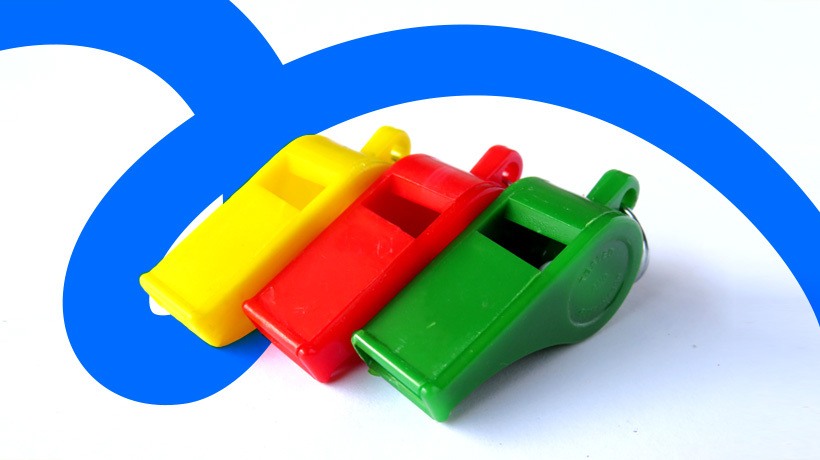Launch An Effective Employee Coaching Program
People are the most valuable asset for an organization. A highly-skilled workforce is far more productive and intelligent, requires less hands-on management, performs at a higher level of efficiency, and produces the highest quality of work. This is the reason you find most of the world’s successful organizations investing heavily in employee coaching to achieve employee performance goals.
Employee coaching helps organizations with performance management. The purpose is to ensure people work to the best of their abilities and produce the highest quality of work most efficiently and effectively. But not every organization has the budget and resources at their disposal to train their employees. This is where our much-appreciated Subject Matter Experts (SMEs) in the corporate industry become so vital for employee coaching. Organizations of all sizes can use their internal SMEs to train the workforce for the development of their skills, capabilities, and proficiencies, to help achieve performance goals.
In this article, I will shed light on employee coaching, the advantages of using internal SMEs for employee coaching, creative ways organizations can implement employee coaching using SMEs, and actionable steps for launching an employee coaching program.
What Is Employee Coaching?
Employee coaching in the workplace is when a leader or senior provides training to the employees with the purpose of improving or maintaining the employee’s job performance. It falls under the company's Learning and Development (L&D) program, and forms an integral part of performance management initiatives.
Benefits Of Using Internal SMEs For Employee Coaching
Internal SMEs are individuals who have gone beyond a general understanding of their specific field, area, or topic. They are much cherished in the corporate world because of their expertise, skills, knowledge, and understanding. An Aberdeen Group study found: “When companies engage an SME for content development, 73% are more likely to see a greater alignment of performance improvements with greater achievement of management goals and objectives.” Having internal SMEs for employee coaching offers the following key benefits:
- They are the master of the field
The very meaning of "SME" is that they have deep understanding and knowledge of, and the skills in, the specific field. They are the best candidates to train the employees who need improvement in skills to perform their jobs effectively. - They know the company culture
Internal SMEs already know the company’s unique values, goals, behaviors, and culture. They can therefore better develop the course content aligned to the company context and goals to train employees effectively. - They know the employees
They are already working with the employees whom they have to train. They understand the employee's strengths and weaknesses and can use these insights to identify the areas where an employee needs training. It also helps them customize training to the learning preferences of the employee. - They are not as expensive as external SMEs
Imagine inviting an external SME to coach your employees with a dedicated employee coaching program. You know it is an expensive affair. Internal SMEs are an integral part of the organization. They are far more cost-effective than hiring external coaches. - They are easy to connect with
Having coaches inside the company makes it easy and comfortable for employees to connect with their trainers and ask questions as they share a common workplace. It also makes it easy for trainers to easily share information to keep employees updated on the newest innovations and trends in the industry. - They can help with performance management with systematic feedback
Internal SMEs can provide effective systematic feedback to improve the performance of individuals. They can use a structured and organized approach based on predetermined specific criteria or goals to provide information to individuals who can then understand their performance in a systematic manner.
Creative Ways To Use Internal SMEs In Employee Coaching
When you have internal SMEs coaching your employees, this gives you the advantage as you can implement employee coaching in your organization in various creative ways. Here are some top, tested, creative ways you can use:
1. Create An Engaging Blended Learning Coaching Program
A well-crafted coaching program aligned with business goals can help employees learn new skills and improve their performance. Create an engaging coaching program using blended learning. It incorporates tutor-led activities, digital tasks, interactive training videos, engaging visual presentations, and working on actual projects, along with traditional classroom-based learning.
You can invest time and money to create eLearning resources aligned with the business context, goals, and values in mind for effective and self-paced learning for individuals. It makes learning interesting, interactive, and effective, and individuals can benefit greatly from being coached. You can complement it with mentoring to provide less experienced workers an opportunity to work with highly experienced ones, in order to get a better understanding of work mechanics and to establish a bond of trust.
2. Job Shadowing
Job shadowing is the best way to teach those individuals who learn best by watching and doing. It involves pairing a less experienced worker with a more experienced worker for a period of time so that they can directly learn how to perform various tasks and functions in a particular area by watching. This provides a great opportunity for the "shadowee" to get first-hand experience of the failures, experiences, and successes of their experienced trainers, to help them to improve their job performance and grow in their careers.
3. Lunch And Learn Series
Coaching need not always come in a formal and structured package. Some people tend to learn better in light-hearted environments. Having a series of "Lunch and Learn" events is a great way to transfer knowledge to employees in an informal setting. In this initiative, companies host lunch meetings where they provide food to the participants, and SMEs share knowledge with the employees.
4. SME-Led Webinars, Workshops, And QA Sessions
In the age of remote working with distributed teams, internal SME-led webinars, remote QA sessions, and digital workshops are a great way to provide training to the employees, along with driving team engagement. These sessions provide the opportunity and platform for employees to ask questions and seek advice from SMEs.
5. Community Building With SMEs
Employee coaching is not a one-time event. It is a journey. You can build a community with SMEs and create a small knowledge-sharing circle, where people with similar interests can meet, share information regularly, and indulge in in-depth discussions. This will help everyone to learn from one another.
6. Gamify The Learning Process
Employee training is often perceived as boring. Coaches use various methods and tricks to make it interesting. Gamifying the learning process is a great way to make corporate training interesting. It involves adding game elements into non-gaming environments to make learning fun and easy. You can include rewards, a leaderboard, and punishments to gamify the training process. Various software in the market helps you to gamify the process of corporate training and offering feedback, to help you achieve the training objectives.
7. SME Podcasts
Educational podcasts have gained huge popularity in recent times for the Learning and Development of professionals. This is because podcasts are more engaging than written learning resources and cheaper to produce than videos. You can create SME podcasts for the training and development of employees. Employees can listen to them while driving, or in their free time in the office.
Apart from this, you can utilize SMEs-led networking events and competitions for effective knowledge transfer to improve the performance of the entire workforce.
Actionable Steps For Launching An Employee Coaching Program
All of this knowledge can help you with intellectual entertainment, but not with performance management if you do not have an actionable plan to launch an employee coaching program. Based on my experience of working as an SME and providing first-hand training to my workforce, I have shared actionable steps to help you develop and launch an employee coaching program for effective employee coaching.
1. Define The Objectives Of The Program
The first step to designing an effective employee coaching program is to identify the training needs and clearly define what the program is intended for. It can be designed to teach employees skills and software to help improve job performance or apply for promotions, or it can simply be a behavior modification program. Clearly define what you want to achieve from the program and what your expectations are from the employees. It will help you create a program in the right direction.
2. Set Clear Goals, Define Benchmarks, And Decide Time Frames
Without defined goals, benchmarks, and time frames, it is hard to measure the success of an employee coaching program. You can use the SMART framework to create the structure of the program. It will give you a clear idea of what you are going to teach in the given time frame, help you track the program's progress, and define when to conduct employee assessment tests.
3. Identify The Right Coaches
You need to find individuals who not only have the expertise in the specific field, but also have the mentorship skills and knack for sharing knowledge. The L&D department can provide leadership and management training to internal SMEs before they start teaching to help them teach and mentor employees effectively.
4. Define The Learning Approach
Blended learning is the most popular approach in corporate training. You need to strike the perfect balance between various training methods, such as classroom training, eLearning resources, and the firsthand experience of working on actual projects so that employees have a comprehensive learning experience. If you are running a one-to-one coaching program, it is best to assess the individual's learning preference and train accordingly.
5. Create Training Content
Training content is the foundation of an effective coaching program. It should be created keeping the business context in mind. Internal SMEs can work in close coordination with the Learning and Development department to create content for the program.
6. Monitor Progress With Regular Check-Ins And Feedback
Schedule regular feedback sessions and check-ins to monitor progress. This provides an opportunity both for the mentor and the employee to have an open discussion and build a connection. You can talk about the areas where an employee needs improvement based on your assessment, clearly define expectations, and provide guidance for effective learning. You can also ask employees for coaching feedback to make any adjustments if required. Employees should feel secure enough to give honest feedback.
7. Measure The Impact
Without measuring the impact of the program, you can’t decide whether the program is going in the right direction. Assess employee performance and productivity before and after the program to measure the success of the employee coaching program. You can also conduct a survey about employee satisfaction with the coaching program. This will provide you the data-backed insights to make the right decisions, and to adapt and evolve your employee coaching program.
Wrapping Up: The Power Of Employee Coaching
An employee coaching program is not about checking boxes just for the sake of doing it or feeling nice by helping employees. It is an opportunity to create a highly skilled workforce that can perform to their best potential to achieve business objectives. It is a direct investment in the growth and future of your business. Having an incredible coaching program in place, with internal SMEs invested in it, you can help employees learn new skills and improve job performance, reap fruitful rewards for the business, and achieve the company’s goals and objectives.









